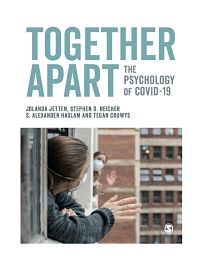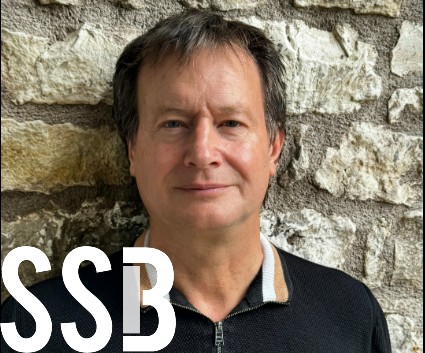Crowds and COVID: Excerpt from ‘Together Apart’
Crowds do not have a good reputation. They are associated with violence and excess, emotionality and irrationality — all summed up in the derisive word ‘mob’. When people refer to ‘mob psychology’ the implications are always negative. The term is rooted in a contrast with refined, reasonable, and civilized behaviour. Above all, it implies a litany of loss: loss of reason, loss of restraint, loss of morality. In the mob, decent people become like beasts. It is therefore not surprising that in the midst of the COVID-19 crisis, aside from infection fears, gatherings of people on beaches, public transport and in parks were met with concern and even alarm. Crowds are associated with trouble.
People have been taught to fear the masses as destructive forces
Crowd psychology emerged from concerns about the formation of a mass society in the era of industrialisation (Giner, 1976) and about the preservation of social order. At the root of such concerns lies a belief that in the absence of clear hierarchies to guide them, people are unable to think for themselves. This model holds that, given the psychological fragility of people and the futility of trying to reason with them, there is a need to shepherd them (see also Chapters 1 and 5).

If the masses were an imminent threat, the “crowd” represented the moment at which they would rise up to batter down the social order. Hence the crowd has become a dense symbol of all that the elites feared in the mass: in the crowd, people were thought to be quintessentially destructive (Barrows, 1981). All these ideas were central in the writings of the early crowd psychologists: predominantly gentlemen scholars, particularly from France which, in the Paris Commune of 1871, had witnessed the uprising and temporary victory of the masses. They had seen the crowd in action. They were terrified and haunted by it.
The most famous of those scholars was Gustave Le Bon. In his 1895 book on The Crowd, Le Bon argues that the self is lost as one becomes submerged in the crowd. Loss of self means loss of standards, and so one has no means of evaluating and resisting the ideas and emotions to which one is exposed. These ideas therefore become “contagious”, spreading without check. Where do these ideas come from? Le Bon saw them as emerging from an atavistic collective unconscious which is exposed once the rational individual self has been stripped away. As a consequence, Le Bon asserted, crowd members are barbarians: fickle, emotional, unable to reason, sometimes heroic, but always destructive. It is not a pretty portrait. But it is an influential portrait, which continues to colour both popular views and the practices of agencies such as the police and emergency services (Drury et al., 2013) — including those who report on and deal with mass behaviour in the COVID-19 crisis.
Crowd behaviour is shaped by shared notions of morality
Le Bon’s portrait may be influential, but it is far from accurate. This is hardly surprising. He and his contemporaries viewed the crowd as horrified outsiders. Early crowd ‘science’ was a discipline rooted in fantasy and fear more than evidence (McPhail, 2017; Reicher, 2001). On closer and more systematic inspection a very different image emerges. Crowd events are not random explosions of rage. Indeed, violence and conflict are very much the exception rather than the rule (Barrows, 1981). But even in the most violent of crowds, behaviour remains orderly and patterned, and these patterns are socially meaningful (Davis, 1973).
Take food riots as an example (which many fear as a possible outcome of the COVID-19 pandemic; Paine, 2020; Thapar, 2020). One might think these to be the simplest of events: people get hungry, people see food, people get together and break down the doors to the stores, grab the food and run away. Yet, as Thompson (1971) shows in his analysis of nearly 700 such riots in England during the 18th century, the reality was very different. Riots typically happened when grain was being transported out of a locality. Crowds would ‘confiscate’ the sacks, sell them amongst themselves, return the money — and often the sacks as well — to the merchants. Not only was there a clear order to these ‘riots’, but people’s behaviour also reflected what Thompson called a ‘moral economy’ amongst the peasant rioters. This refers to a collective understanding of rights and wrongs: that available resources should be distributed locally rather than being sent to market, and that they should be sold at a fair price.
Thompson’s analysis also begins to explain what lies behind and produces crowd behaviour. The core of his argument is that people do not act, as Le Bon suggested, without standards and hence without constraint. Rather they act in terms of collective standards and shared notions of morality, which shape their actions. The key question for psychologists is how it is possible for collective beliefs to shape the behaviour of individuals in the crowd. The answer takes us back to the tenets of social identity theorising.
A social identity model of crowd action focuses on the shift from personal to social identity
We have seen how traditional crowd psychology views the crowd in entirely negative terms. And we have seen how, for Le Bon, this all starts in the loss of selfhood. For him the individual self is the sole (valid) source of standards to guide our everyday behaviour. Loss of self therefore means the loss of any standards. It is here that the radical implications of the concept of social identity, as discussed in Chapter 2, become evident. The starting point of a social identity model of crowd action (Reicher, 1984, 1987) is that we do not lose identity, but rather shift from personal to social identity. Correspondingly, we do not lose standards but rather the basis of our behaviour shifts from individual standards to collective norms, values and beliefs. As with Thompson’s food rioters, crowd action has social shape to the extent that crowd members are acting in terms of a common social identity characterised by a shared collective understanding.
In making this argument, we are not suggesting that any and every gathering of people develops a shared identity of this form. Shopping, commuting, sunbathing: there are many occasions where we may be physically crowded with others without having any sense of psychological connection to them. However, it is precisely by considering what happens when such a connection does emerge that we can begin to appreciate the implications of shared social identity in a crowd. We call this a psychological (as opposed to a physical) crowd.
Imagine yourself aboard a train crowded with strangers. You are psychologically distant from other individuals. Their chatter, their smell, and their touch as they press up against you are all odious. But then the train grinds to a halt. A loudspeaker announcement informs you, without much detail, that there is a problem. At this point, you begin to transition from separate individuals to a group of passengers bound together by common resentment against the rail company. As ‘I’ turns to ‘we’, the physical crowd transitions to a psychological crowd, and a series of other transitions occur (Neville et al., in press).
First, there is the cognitive shift we have already described: people start to think in group terms. They relate to others as fellow group members rather than as strangers, and are motivated by their shared understanding of passenger rights. Second, there is a relational shift: people develop a greater intimacy with others, they start to turn and talk to each other, share revealing stories, and share their sandwiches. Such sharing and social support is vital in crises, as we outline in Chapters 13 to 15, and it generates a sense of empowerment, of mastery, and of resilience (see Section C). This is particularly important when people have to endure difficult circumstances. Third, there is an affective shift. Intimacy, support and the sense of mastery are all pleasurable experiences. Together they mitigate the negatives of crisis situations, and perhaps explain why people can experience objectively trying conditions with a sense of subjective positivity (Hopkins et al., 2019).
Intergroup dynamics determine crowd behaviour
Thus far, we have concentrated mainly on the psychological transformation that occurs within a psychological crowd — the intra-group dynamics. But crowd events are not just about the crowd. Typically, they involve more than one group — for example, fans of two rival sports teams, or protestors and counter-protestors, or — perhaps most frequently — the crowd and the police. No analysis of crowds is complete, therefore, without examining the processes that occur between groups — the inter-group dynamics. This is particularly important if we want to understand how crowd conflict emerges (the topic of Chapters 16 and 18).
The key point is that violence and conflict do not inhere in the crowd in general, or even in the norms, values and beliefs of particular crowds (although some may be more or less opposed to the use of violence). Generally, it arises out of the interaction between multiple parties (Neville & Reicher, 2018). If one group is seen to be acting in ways that appear to threaten the other or else to violate its sense of rights (either forcing them to do something they consider illegitimate or preventing them from doing something they consider legitimate), then this is likely to be contested, resulting in a spiral of tension that can culminate in violent conflict (Reicher et al., 2008, also Chapters 19 & 20). Indeed, given that stigmatised groups are often considered dirty and diseased, this is particularly potent in a pandemic.
Crowds can be both destructive and constructive forces
It also follows that classic crowd theory is not just wrong about the nature of crowd action — it is actively misleading. In seeing crowds simply as a problem that must be eliminated, traditional thinking ignores the positive aspects of collective psychology — the solidarity and resilience that arise when people act with and for each other, and which are such an important resource in getting us through a crisis — and magnifies its negative aspects. The COVID-19 emergency has made it even more important to understand the constructive and avoid the destructive sides of crowds in a crisis. In the next chapter, we examine more closely exactly how people behave in an emergency.
Explore This Theme
Introduction to Collective Behaviour
Crowds | Fergus Neville and Stephen D. Reicher
An outline of both traditional and contemporary models of collective behaviour.
Emergencies and disasters | John Drury and Selin Tekin Guven
How people behave in crises, mapping the emergence of widespread solidarity
Solidarity | Evangelos Ntontis and Carolina Rocha
Exploring the psychological underpinning of such solidarity, providing evidence for the critical role of shared social identity.
Managing crowds in crises | Holly Carter, Dale Weston and Richard Amlôt
Looking at emergency services and their relation with the public
Social order and disorder | Clifford Stott and Matt Radburn
Examining the nature of police–public encounters in determining whether the public stay united and orderly



























































































